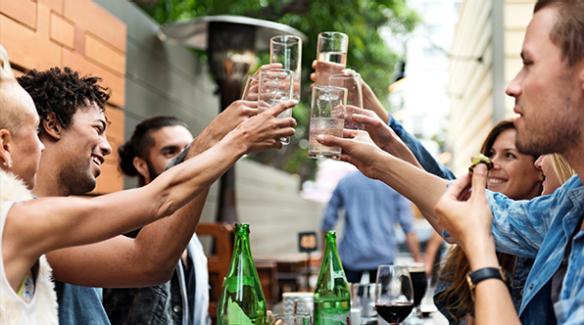
Drink to This: Latest Research into Australia’s Beverage Habits
18-01-2018
A 2015 report into the role of non-dairy, non-alcoholic beverages in the Australian diet has uncovered a series of interesting statistics about the nation’s habits and how they are changing over time.
On the day of the survey, the typical Australian adult drank 4 ½ glasses of water, and smaller quantities of sugar-sweetened (around ¾ glass) and low-kilojoule beverages (around ¼ glass). Since the last national nutrition survey in 1995, the proportion of adults’ drinking water rose by 6 per cent while daily soft drink or flavoured-water consumption fell by 2 per cent.
Sugar-sweetened drinks including soft drinks and fruit drinks account for 3.2 per cent of the overall energy intake by adults.
The report is based on a secondary analysis of the federal government’s Australian Health Survey: National Nutrition and Physical Activity Survey (2011-12). The analysis was conducted by the CSIRO Food and Nutrition Flagship and commissioned by the Australian Beverages Council to provide health professionals, health organisations, policymakers and the beverage industry with an accurate understanding of the role of beverages in the nation’s diet.
The Australian Bureau of Statistics says it “represents the largest and most comprehensive health survey ever conducted in Australia”.

Water is the beverage of choice for Australian adults according to the Australian Health Survey. What are you drinking?
What's your preference?
Quizzed about their daily intake of non-dairy and non-alcoholic beverages, 86 per cent of adults reported that they had consumed water on the day they were surveyed; 19 per cent drank sugar-sweetened soft drinks; 15 per cent fruit juice; 11 per cent low-kilojoule drinks; 8 per cent fruit drinks; 5 per cent cordial; 3 per cent energy drinks and 3 per cent sports drinks.
Who’s drinking what?
Beverage selection is closely tied to life stages: young children aged 2-8 years were the highest consumers of fruit drinks and cordials; teenagers between 14 and 18 years, especially boys, drank the most sugar-sweetened soft drinks and adults aged 31-50 years consumed the most low-kilojoule drinks as a proportion of overall beverage consumption.

Did you know the average Australian adult drinks four-and-a-half glasses of water a day?
How have beverage habits changed over time?
Comparing beverage consumption over the years from 1995 to 2011-12, when the most recent data was collected, there appears to be a clear trend emerging for Australian adults to drink more water. The average daily intake of water appears to have risen by 32 per cent to more than 1.1 litres (around 4 ½ glasses), while the average daily intake of soft drinks and flavoured water has declined by around 11 per cent over the same period to 160 millilitres (less than ½ can).
Have we got the balance right in our diets?
The report reveals that adults are consuming too much of what may be described as “discretionary” or “treat” foods. It noted that a large 36 per cent of total energy intake is coming from discretionary foods (e.g. sweet biscuits, cakes, desserts, ice-cream, sugar-sweetened drinks and alcohol) which are best reserved for occasional rather than regular consumption.
Confectionery and chocolates contributed the most to adults total energy intake from discretionary food, representing 18 per cent of the total: sweet biscuits and cake make up a further 13 per cent, as do alcoholic drinks. In comparison, soft drinks comprise 4 per cent and other sweetened beverages a further 4 per cent of the discretionary food basket.
Read Time
What others are reading
More to enjoy